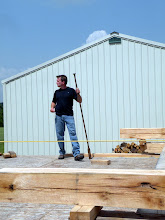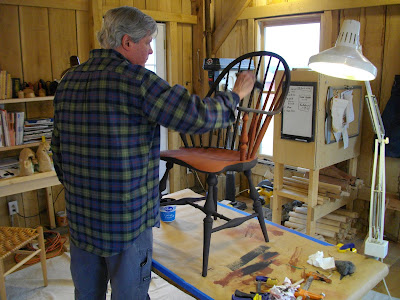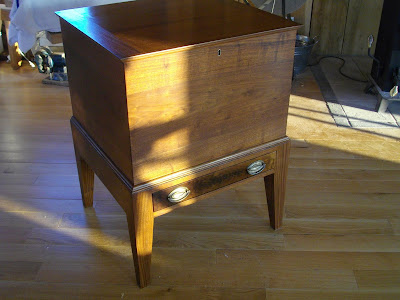Let me introduce you to my son Logan. He's eleven (and a half). He is so full of life and loves to tinker with tools in the shop. You can see him below cautiously carving the front of a seat. What you can't see (or hear) are all the questions and comments as he works away. "Dad, why is the wood so rough right here? Dad where can I carve next? Boy this really hurts my arms. How far down do I carve? Can we make a bow and arrow now?" The questions are not much different than the ones my more mature students ask. Watching someone for the first time try to figure out grain direction is cool. It's something I do without thought but first timers go against the fibers every time. It doesn't take long for the wood to tell you what you are doing wrong.
I use to not let Logan pick up sharp tools in the shop but he has really taken an interest with the draw knife, spokeshave, and shave horse. The practice is priceless at his age to learn the nuances of wood. His mind is like a sponge.I wish I had this opportunity 30 years ago.
 I guess we haven't done too bad as parents .Logan has such a big heart and strong mind. He is very respectful of his elders and likes to help those who are less fortunate. I would love more than anything for him to follow his old man's footsteps but whatever he does I know it will be great and with that blond hair and blue eyes I'm sure he will find a new home for that jewelry box.
I guess we haven't done too bad as parents .Logan has such a big heart and strong mind. He is very respectful of his elders and likes to help those who are less fortunate. I would love more than anything for him to follow his old man's footsteps but whatever he does I know it will be great and with that blond hair and blue eyes I'm sure he will find a new home for that jewelry box.Recently I commented to Pete Galbert about a method to grind the relief on the back of my draw knives. I was using rare earth magnets stuck to my tool rest but the magnets collect the shavings and tend to bind the knife as I work it back and forth on the edge of the slow speed grinder. I now just free hand it on the rest without any sort of fence which works fine. You could clamp a wood fence to the rest and apply paste wax to smooth the operation.I move the blade close enough to hit the back in the center and hollow out enough to aid in honing the back flat. Sorry I don't have a picture of this but it is very similar to Pete's method of sharpening the bevel. You only need to do this once and it's so fast and effective for future honing.










